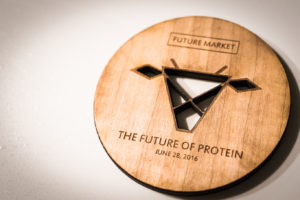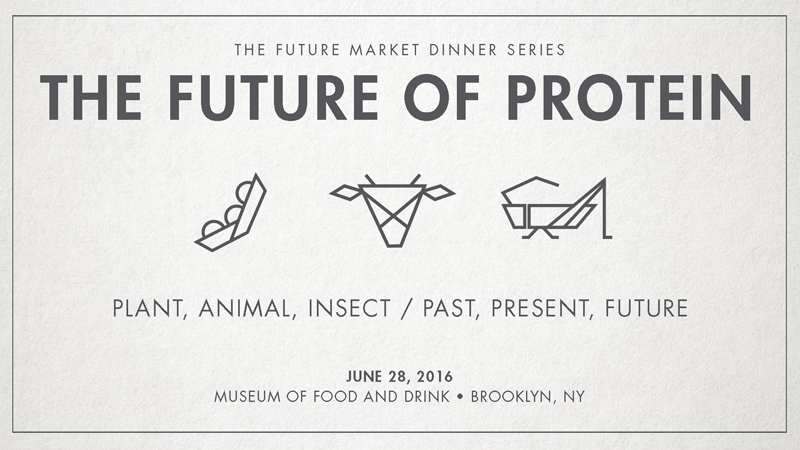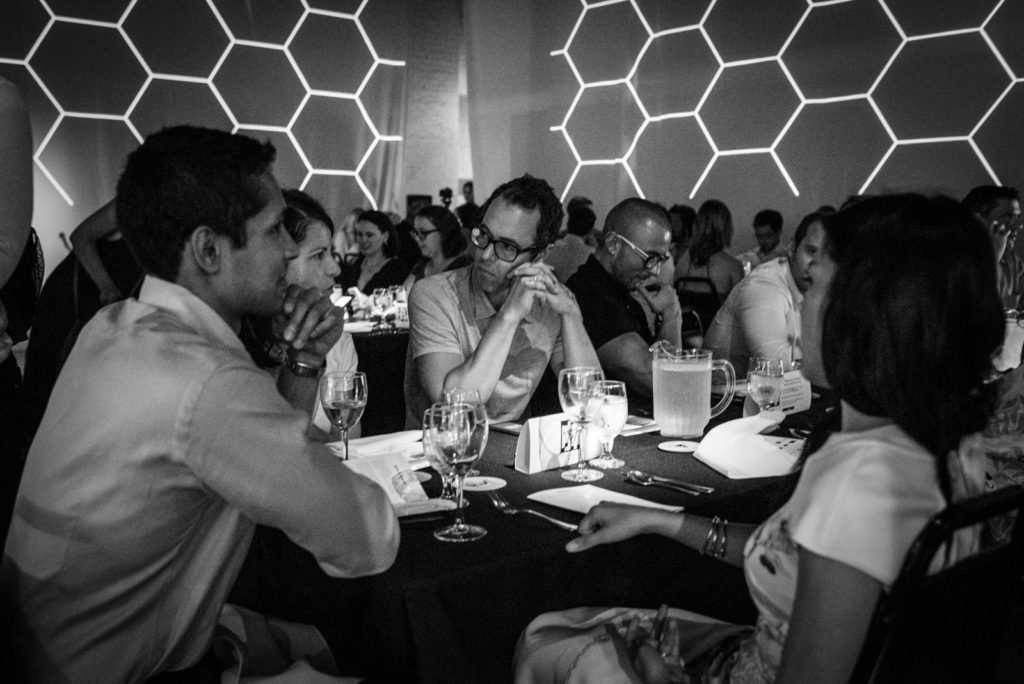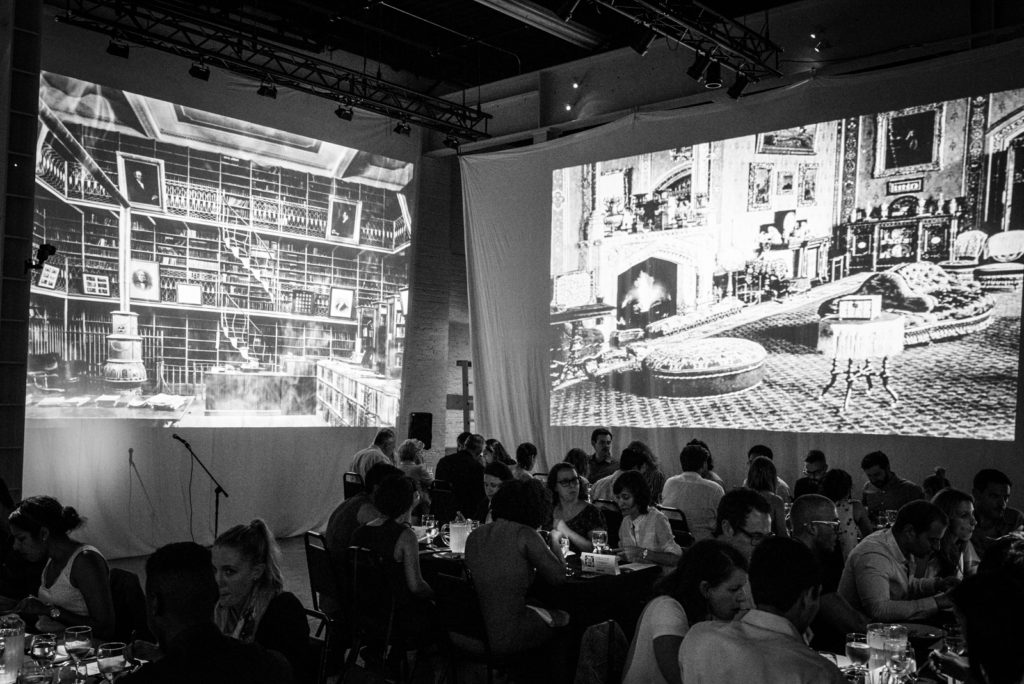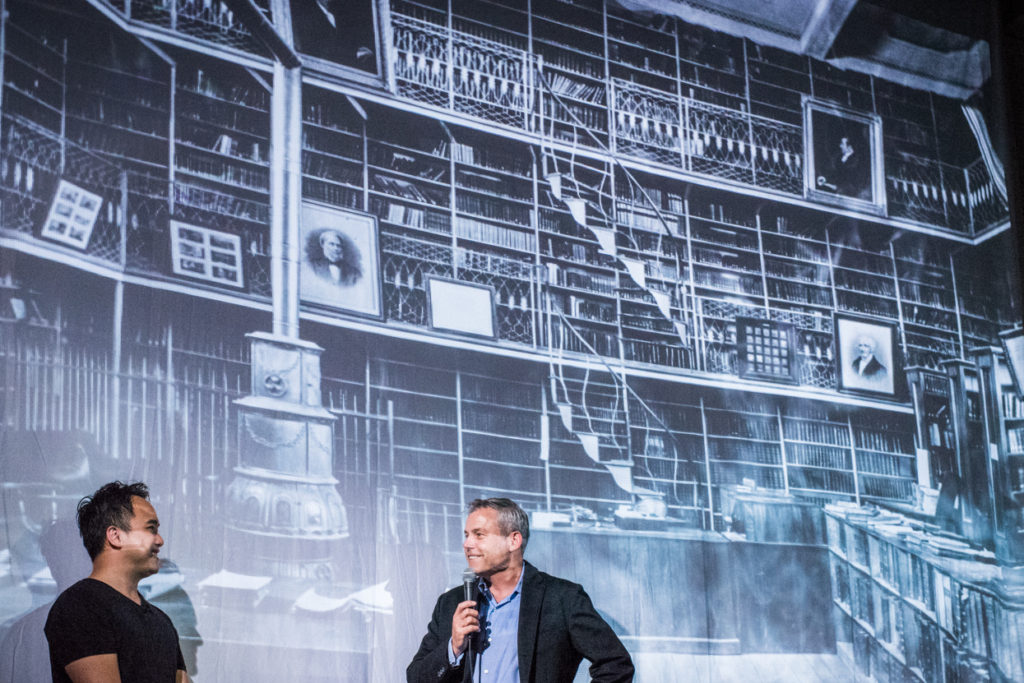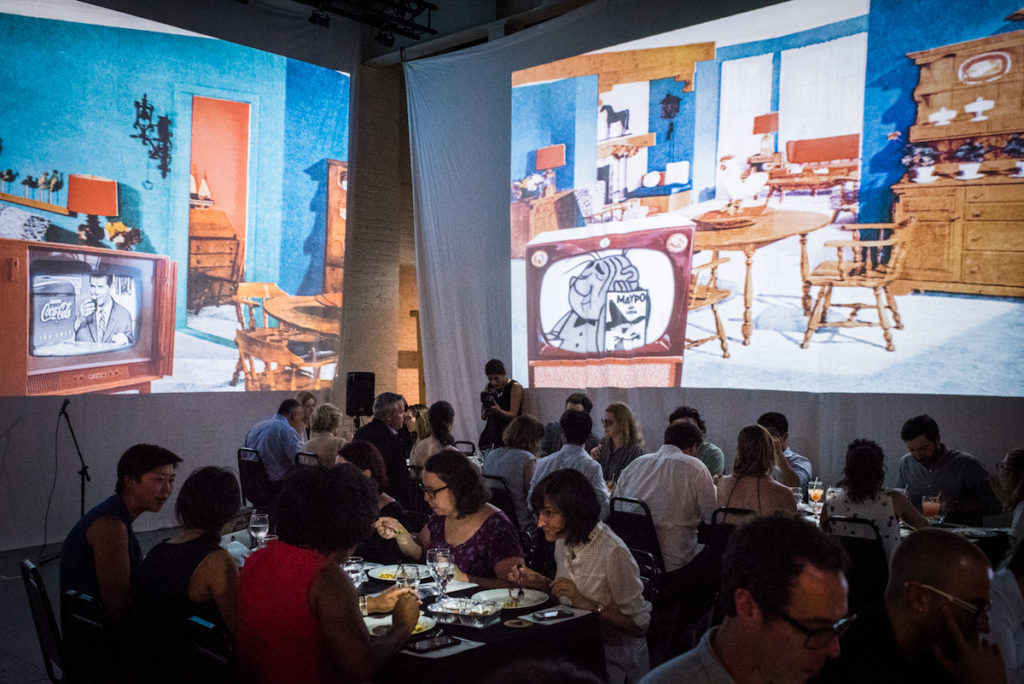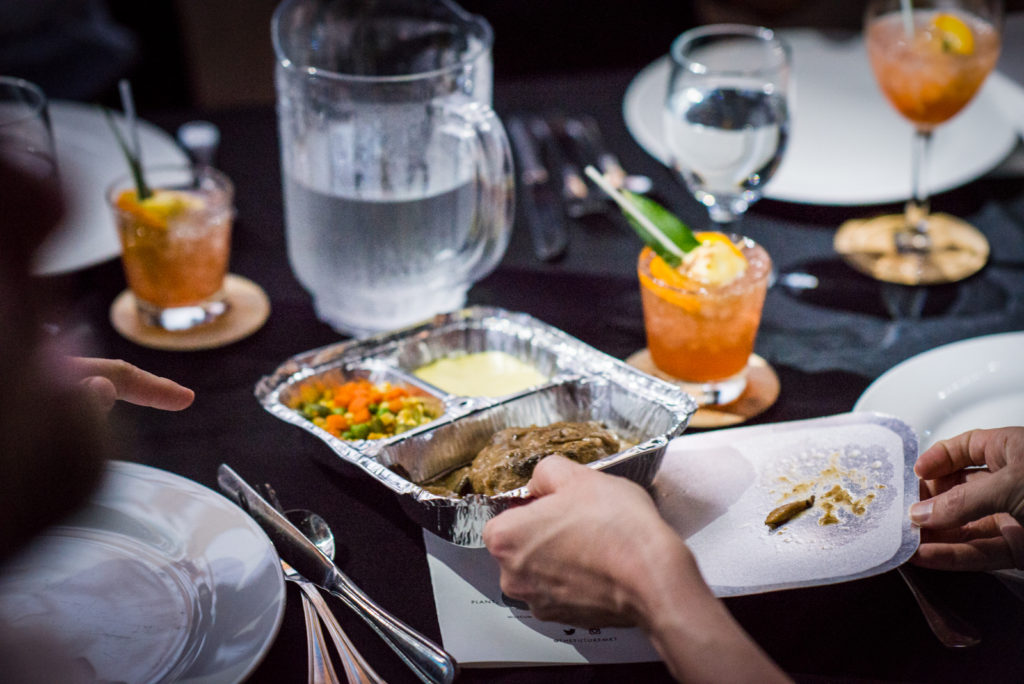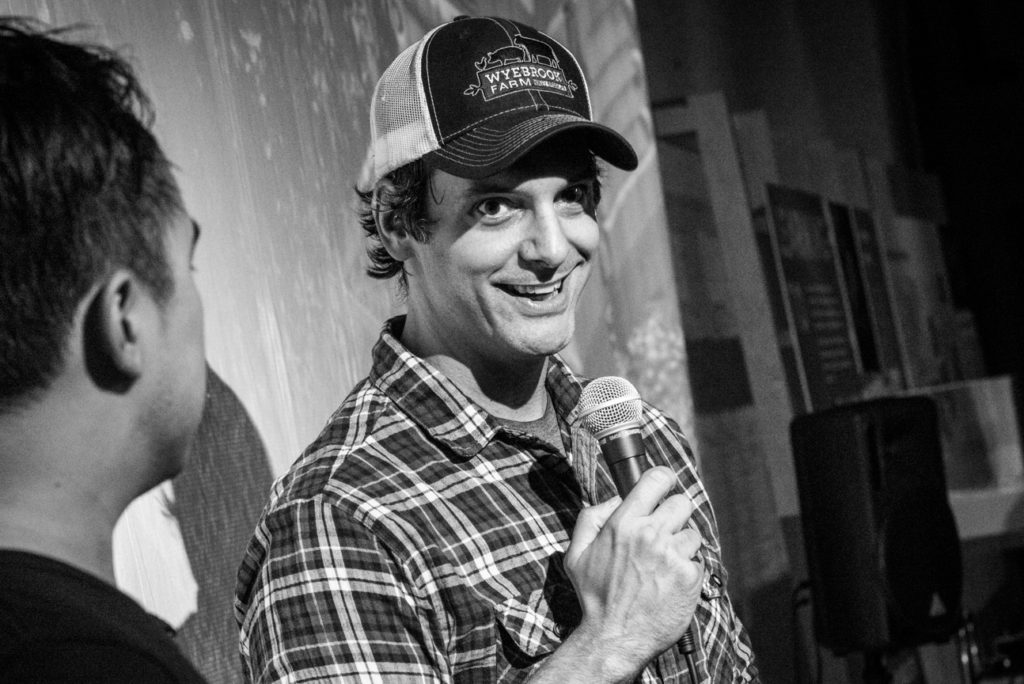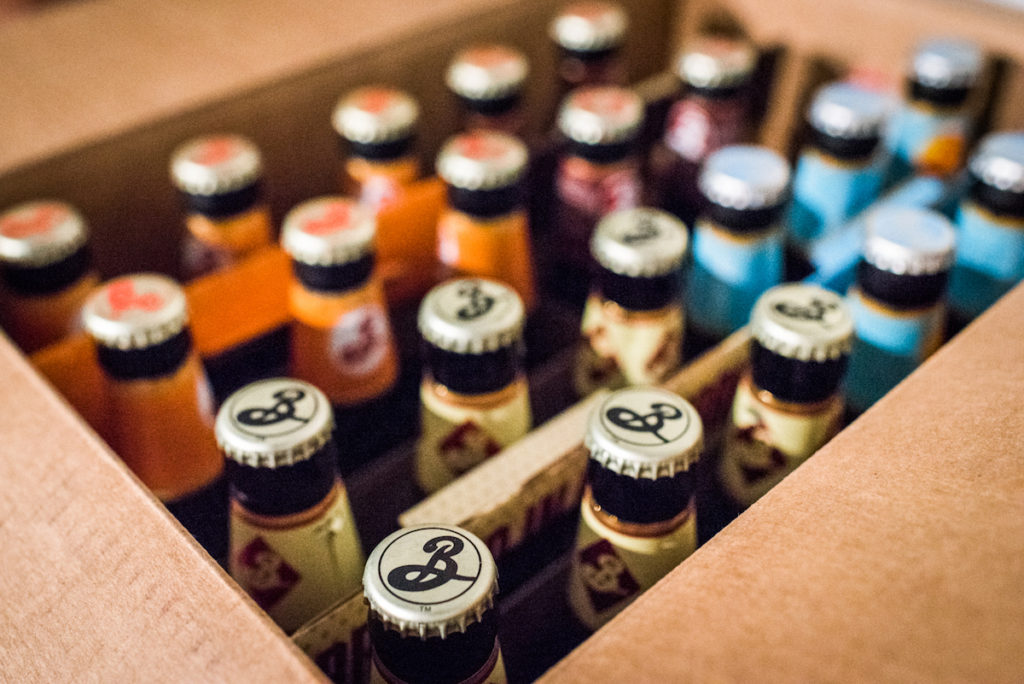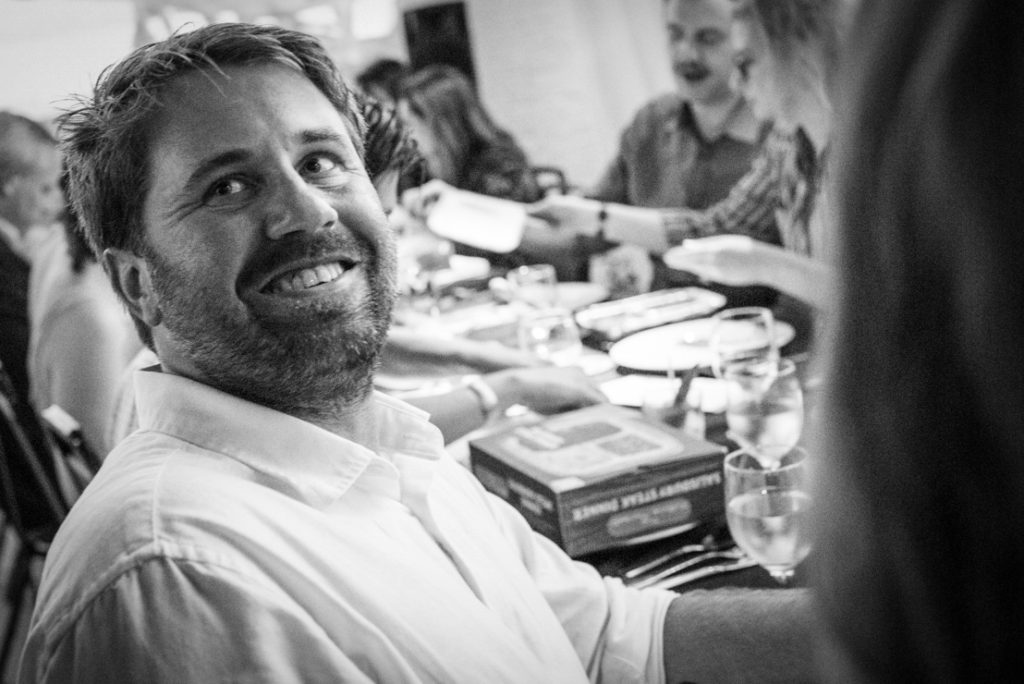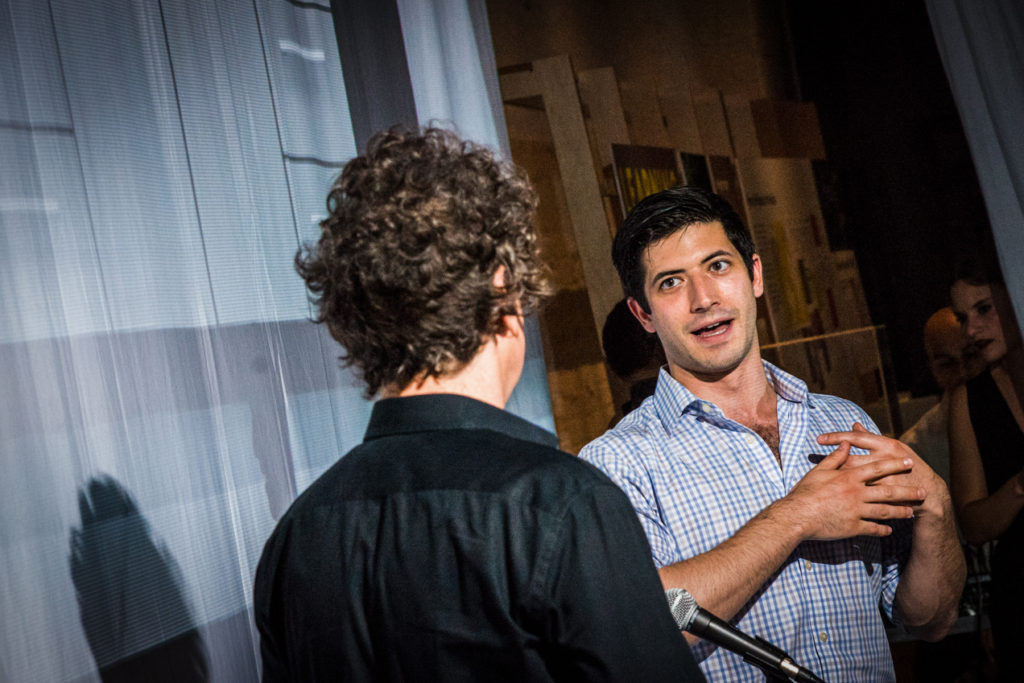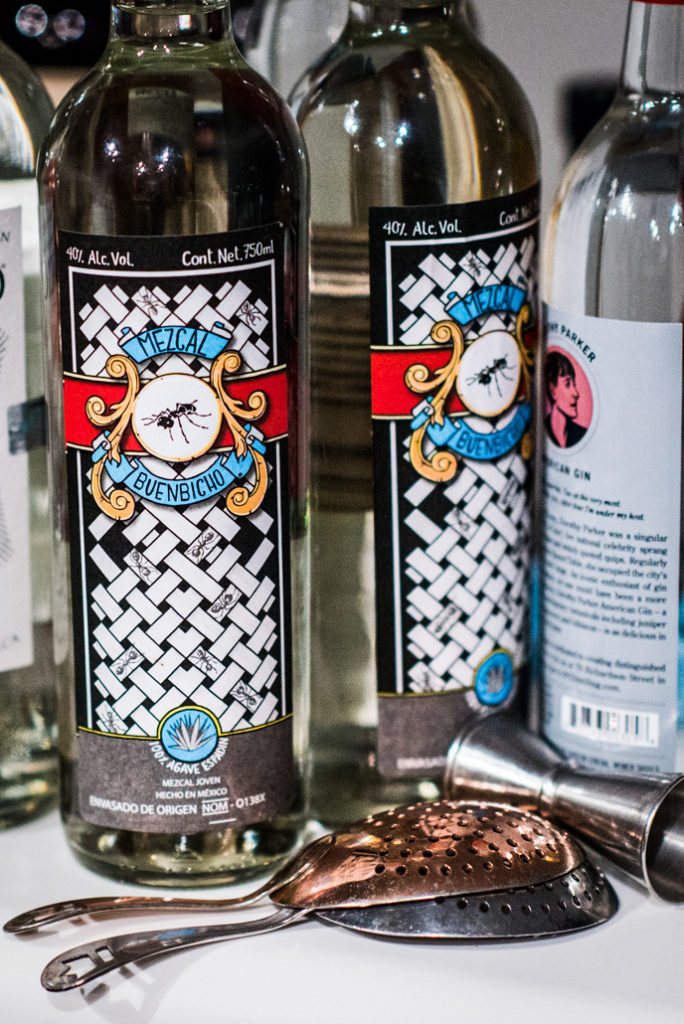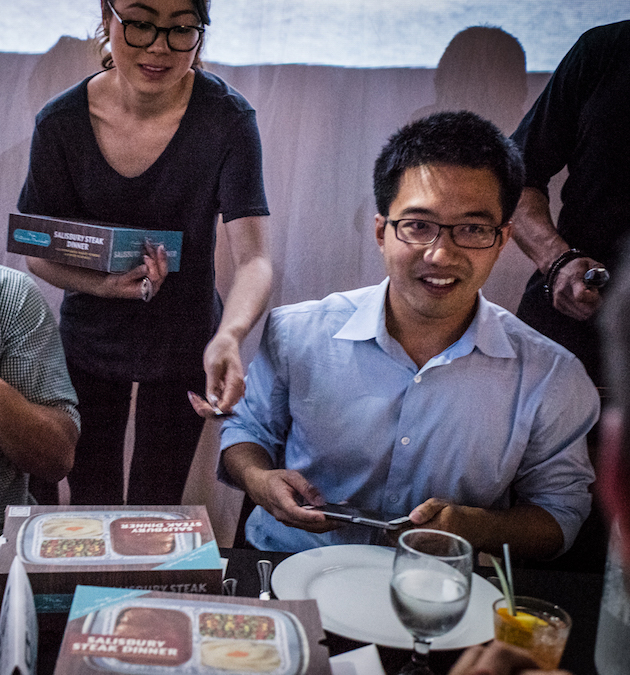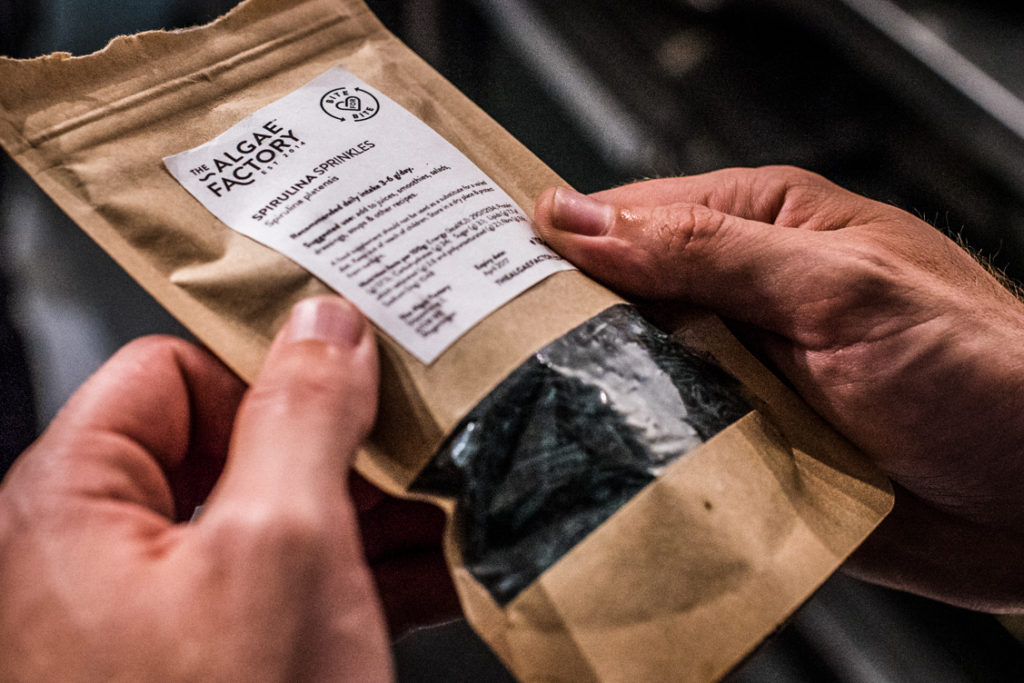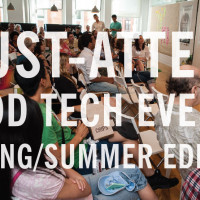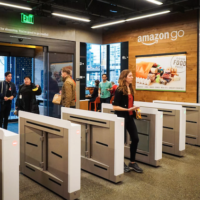Last month, The Future Market kicked off our Future of Food Dinner Series to bring the themes shaping the future our food system to life. The Future of Protein was the first theme in the series, held at the Museum of Food and Drink in Brooklyn on June 28. Part food conference, part dinner, part art installation, the Future of Food dinner series showcases the biggest ideas impacting our food system in an immersive, delicious dining experience. The goal for this dinner series is to bring the food innovations of tomorrow to life today through thought-provoking, memorable dining experiences.
Using Design & Experience To Explore The Future of Protein
From the massive impact conventional animal farming has on our ecosystem to the effects excessive meat consumption has on our health, there are few areas of food that touch our economy, environment and culture as deeply as protein. It’s clear that our current approach to protein production and consumption is unsustainable. A lot of the conversations around the future of protein are just that – conversations, research reports and articles. The Future of Protein dinner was all about highlighting the work of innovators rethinking protein in a way that that’s better for people, planet, and profit.
To imagine where our food system might be headed, it’s important to show where we’ve been. In seven courses, the Future Market team showcased the past, present and future innovations that have and will shape protein’s role in our food system. Each course represented the state of protein from a different time era starting in the post-industrial 1850s and ending in the year 2065.
The dinner was an edible exploration of everything from the impact of the green revolution to the role biodiversity, insects and cellular agriculture will play in feeding 9 billion people. We created a visceral experience that enabled our diners – Fortune 500 executives, innovators and eaters – to touch, taste and experience what the future of protein might look like.
This kind of immersive storytelling is key to designing a better future for food, because it brings challenges and innovations of a global scale down to the human scale. We want to show people how massive shifts in the food system translate to an experience on their plate.
In the following post I will walk you course-by-course through the dinner. Protein is just the start of the Future of Food dinner series, so sign up to get notified about future dinners and workshops.
The Future of Protein: Course-by-Course
- Course 1: The Industrial Revolution – The Year 1850
- Course 2: The Green Revolution – The Year 1950
- Course 3: Today, In Transition – The Year 2020
- Course 4: Eating With Ecosystems – The Year 2030
- Interstitial Discussion #1: “You Are What You Eat Eats”
- Course 5: Insects Are the New Normal – The Year 2040
- Interstitial Discussion #2: Cellular Agriculture
- Course 6: Protein for 9 Billion – The Year 2065
You can also visit the Future Market for a full photo gallery.
The Future Market would also like to thank our gracious sponsors: Food+Tech Connect, Museum of Food and Drink, The Algae Factory, Bitwater Farms, Bugsolutely, Entomo Farms, Exo, Fleishers Craft Butchery, Highlands Dinner Club, The Honest Bison, One Hop Kitchen, Kobrand Wines (Bodega Chacra & Sequoia Grove Winery), Brooklyn Brewery, Mezcal Buenbicho, and New York Distilling Company.
Course 1: The Industrial Revolution – The Year 1850
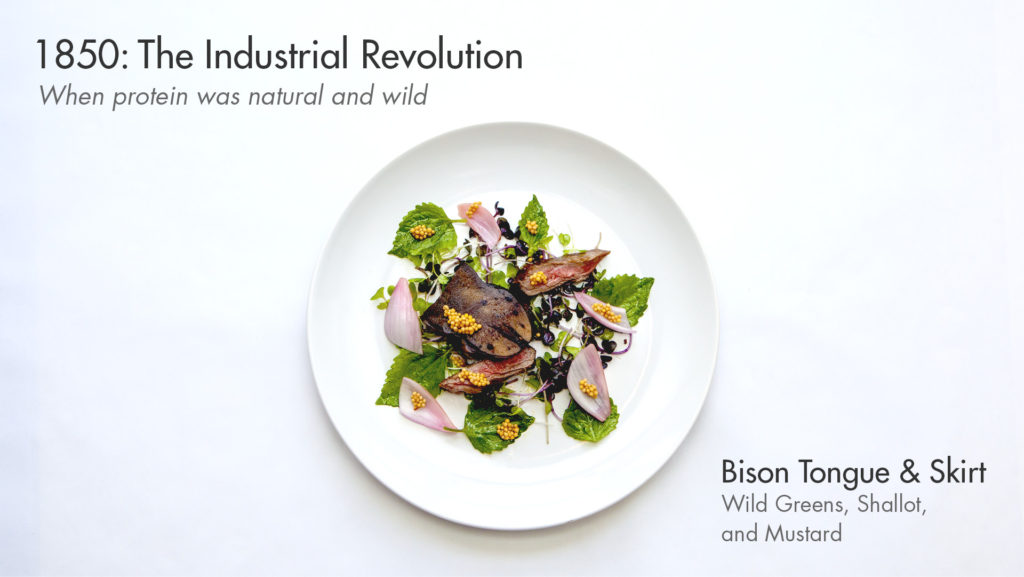
“Wild Protein”
When protein was organic, non-GMO and grass-fed by default
- Dish: Bison, Shallot, Wild Greens, Mustard Seed
- Cocktail: Brandy Punch c. 1852 by Prof. Jerry Thomas
- Featured Conversation: Sean Lenihan, The Honest Bison
We start in a place where protein ran wild and free and the idea of mass-scale farming and processed foods was hard to imagine. Paradoxically, many of the aspirations from our current-day food movement aim to shift pieces of our food system back to this simpler time. Sourcing food from small, local farms was the norm and hunting wild animals like bison was a big part of our protein consumption.
Sean Lenihan, founder and CEO of the Honest Bison, shared his vision for bringing bison back to our plates as a healthy, sustainable source of protein. Like their 1850s brethren, Lenihan’s bison are all grass-fed and humanely raised with “no grains. no hormones. no feedlots. no matter what.” The first course featured tongue and skirt from the Honest Bison, accompanied by pickled shallots, wild greens and mustard seed.
Course 2: The Green Revolution – The Year 1950
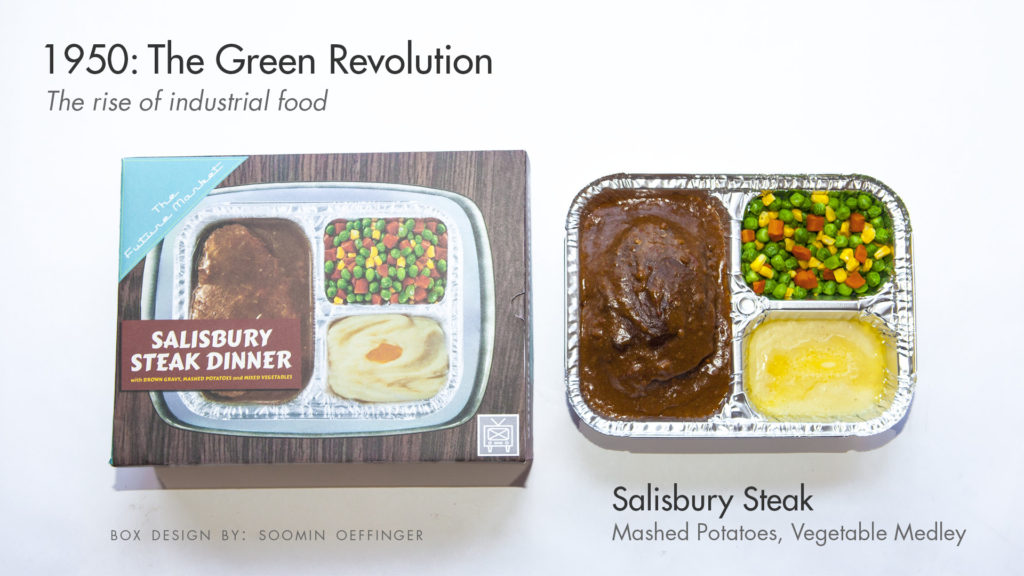
“Industrial Protein”
The rise of the industrial food system
- Dish: Grass-fed Salisbury Steak, Mixed Vegetables and Potato, served in a Future Market TV Dinner box.
- Cocktail: The Swimmer c.1964; Vodka, Beef Bouillon, Tomato
- Featured Conversation: Peter Kim, Museum of Food and Drink
After World War II, the American agricultural system was transformed by the use of industrial inputs such as fertilizer. This shift, combined with government subsidies for calorie-dense crops like corn, wheat and soy, contributed to the creation of a farming system that produces large quantities of inexpensive calories. These cheap ingredients, in turn, constituted the basis for the production of a variety of highly processed foods, profoundly influencing what food is produced and consumed.
Peter Kim, Executive Director of the Museum of Food and Drink, spoke to us about those nascent days of the industrialized food industry. The TV Dinner is one of the most powerful symbols of how our industrial food impacted the way we ate. Food no longer needed to be made from scratch, which meant liberation from the kitchen for legions of homemakers in America. Kim noted that products like TV Dinners facilitated the industrial farming system where animals (and plants) were grown for yield and consistency. The protein system began to shift toward using concentrated animal feeding operations (CAFOs), antibiotics, and other methods to efficiently produce food as much as possible with less regard for animal welfare or environmental impact.
To illustrate the industrialization of our protein, we designed handmade TV dinner boxes featuring grass-fed, dry-aged salisbury steak from Fleisher’s, a medley of farmers markets vegetables and mashed potatoes. Though the TV dinners of 1950 did not include grass-fed beef (a much more sustainable, healthful way to raise beef), we wanted to simulate one of the signature food rituals of the time while adhering to more progressive ideals about how our food is made. This dish demonstrates our hope that well-raised meat and vegetables can one day be conveniently accessible to everyone.

Diners could scan the entire face of the box to learn more about the impact of the Green Revolution, using an augmented reality experience we built in the AR tool, Layar.
Course 3: Today, In Transition – The Year 2020
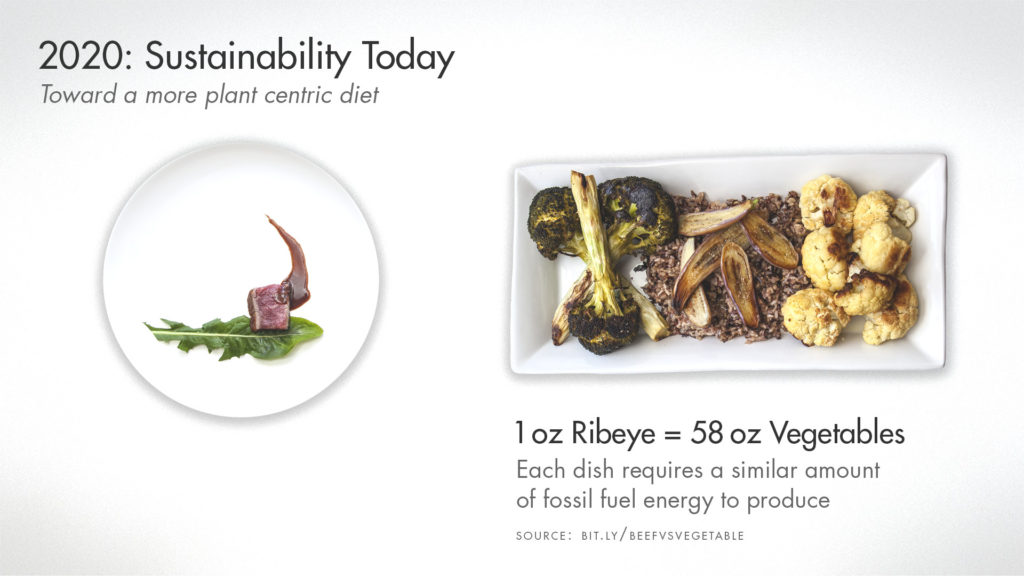
“Sustainable Hedonism”
Shifting toward a more plant-based plate
- Dish: 1 oz of Dry Aged, Grass-fed Ribeye + 58 oz of Energy Equivalent Vegetables.
- Wine: Sequoia Grove Napa Valley Cabernet Sauvignon 2013 & Bodega Chacra Barda 2013
- Featured Conversation: Danielle Gould, Food+Tech Connect
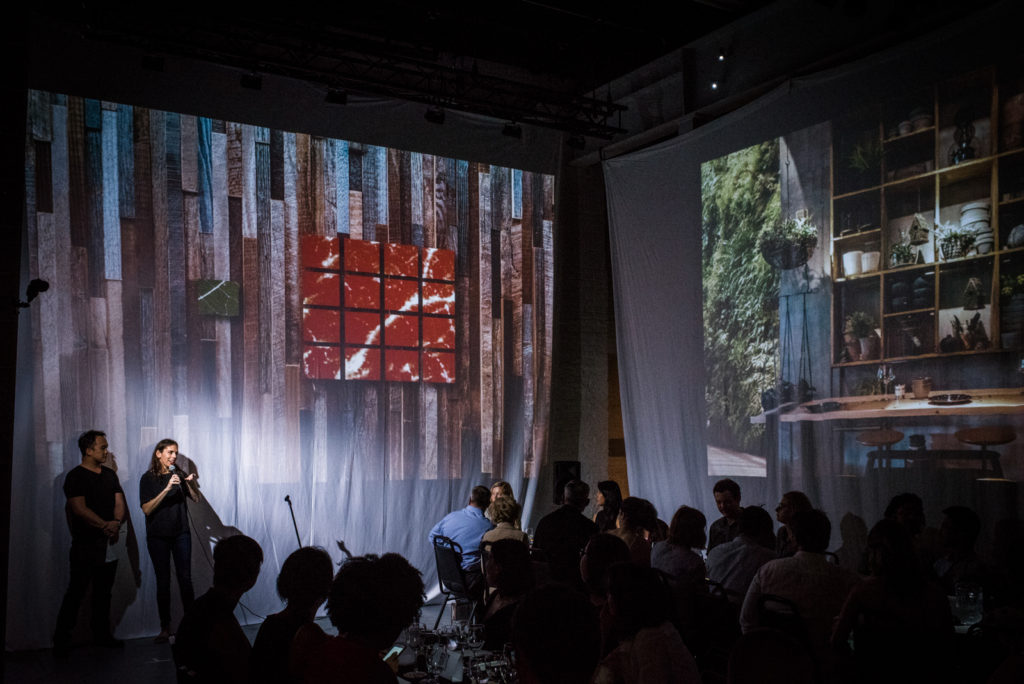
Today, In Transition: the scenery for our current day era, where we strive toward a more plant-based diet.
While most of us love our animal protein more than ever, we have become clear that we cannot continue to produce and consume it in the quantities we were raised to expect. The energy requirements and ecological consequences of mass production of animal protein are clearly unsustainable, especially as we look towards 9 billion meat-hungry humans by mid-century.
Danielle Gould, founder of Food+Tech Connect, touched on $100s of millions of investment money that’s gone into the plant-based protein space with companies such as Beyond Meat and Impossible Foods. While animal protein isn’t going away overnight – if ever – it’s clear that there is a strong movement toward a more plant-forward diet, where meat is still present, but the idea that meat is always center of plate is no longer the cultural default.
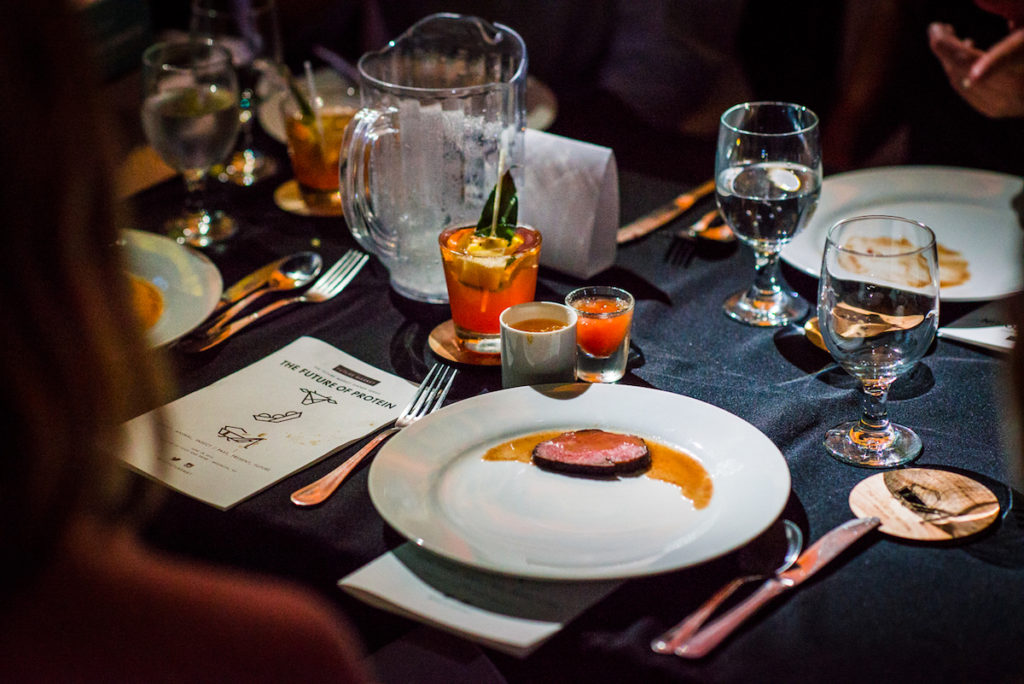
A 1oz slice of grass-fed, dry-aged ribeye. This was paired with a 58oz family style serving of vegetables, which requires approximately the same amount of gasoline equivalent energy to produce.
For this dish, we highlight the disparity in resources required to produce 1oz of beef versus 1oz of vegetable. Diners were served a 1oz piece of grass-fed, dry-aged ribeye alongside a 58oz family style serving of rice, eggplant, broccoli, and cauliflower that required approximately the same amount of gasoline equivalent energy to produce.
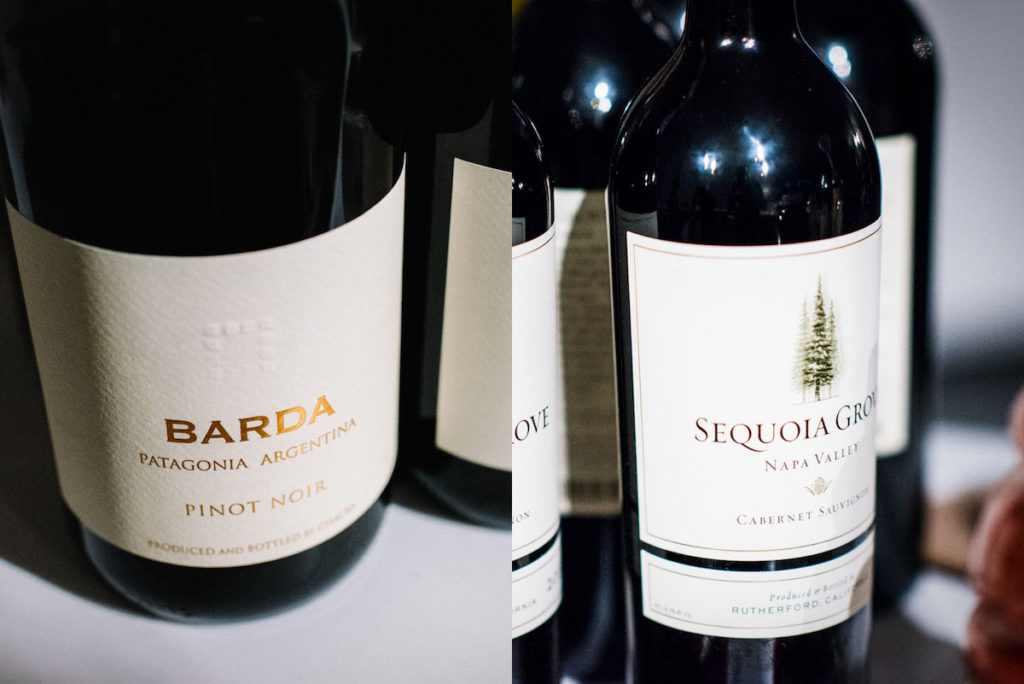
This course is all about the tensions and shifts in how we produce food today. The wine pairing showcases two different approaches to winemaking: Biodynamic (Barda) vs Traditional (Sequoia Grove).
Course 4: Eating With Ecosystems – The Year 2030
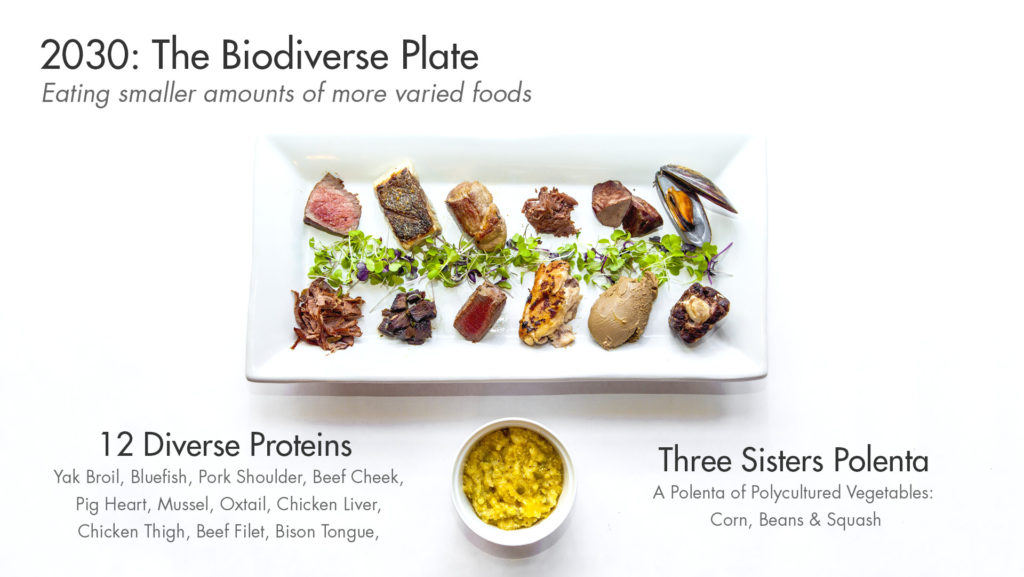
“The Biodiverse Kitchen”
Bringing biodiversity back into our kitchens and diets
- Dish: 12 Diverse Proteins + Three Sisters Biodiverse Polenta
- Beer: An assortment of ten different Brooklyn Brewery Beers
- Featured Conversation: Bryan Mayer, Head of Butcher Education, Fleishers Craft Butchery
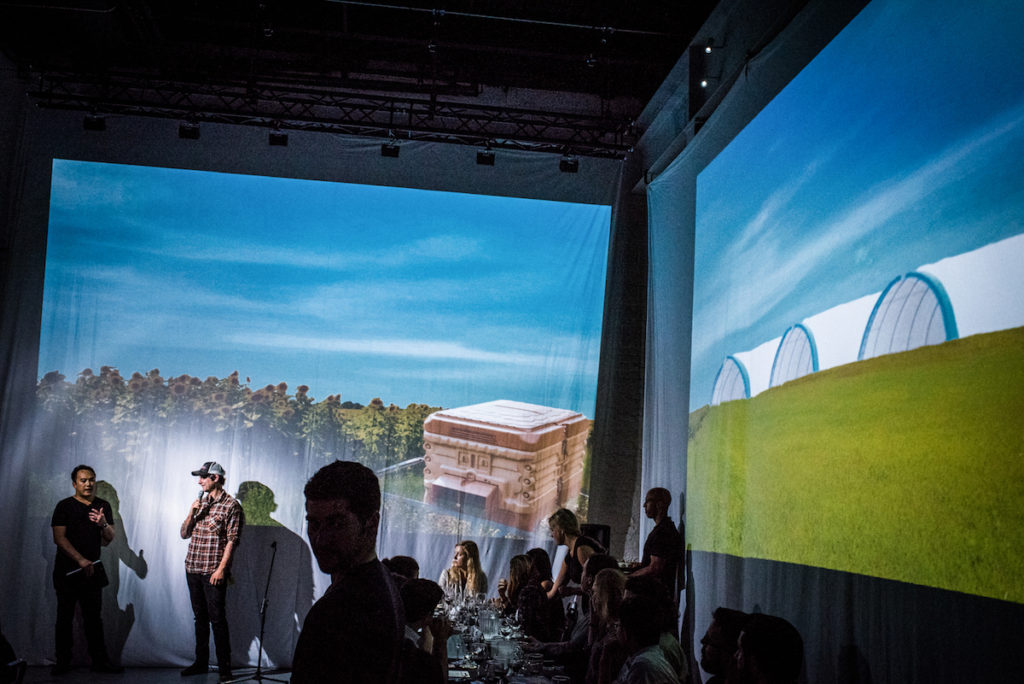
The Biodiverse Kitchen: the future of food is about producing and consuming food in a way that supports a more diverse ecosystem.
Seventy five percent of the world’s food is generated from only 12 plants & 5 animal species. We live in a world centered on monocultures. Food and dietary trends reinforce the behavior of consuming one thing at a massive scale, instead of a more balanced diet that includes consuming smaller amounts of a wider range of foods. As we are discovering, this approach has created all sorts of problems related to artificial fertilizer use, pesticide use and disease prone-crops. Biodiverse agricultural systems bear the promise of creating more resilient and sustainable crops.
Bryan Mayer, Head of Butcher Education at Fleishers Craft Butchery, joined us to share his thoughts on how the future of food is not one thing, it’s about growing and eating a little of everything. As a butcher, Bryan sees first-hand how certain celebrated cuts of meat (ribeyes, chops, etc.) are always in highest demand. But he implores us to expand our horizons and not only eat more less-demanded meat cuts like offal, but to eat a much wider range of food overall. By doing this, we can send a message to food producers that biodiversity and more sustainable systems are what the world demands.
For the year 2030 dish, we wanted to underscore how important it will be to eat smaller amounts of a wider range of proteins in the future. Instead of a larger portion of one kind of protein, diners were served small portions of 12 different proteins: beef oxtail, chicken thigh, bison brisket, chicken mousse, bluefish, smoked mussel, beef heart, beef cheek, bison filet, bison ribeye, pork shoulder and yak london broil.
Three Sisters Biodiverse Polenta was the accompaniment, which is made from corn, beans, and squash. Corn, beans, and squash, when planted together as companion crops, grow symbiotically and take care of each other and the soil much better when planted in sync vs separately. Three Sisters is a Future Market Concept Product illustrating a vision of what polyculture might look like in mass-consumer products.
Interstitial Discussion
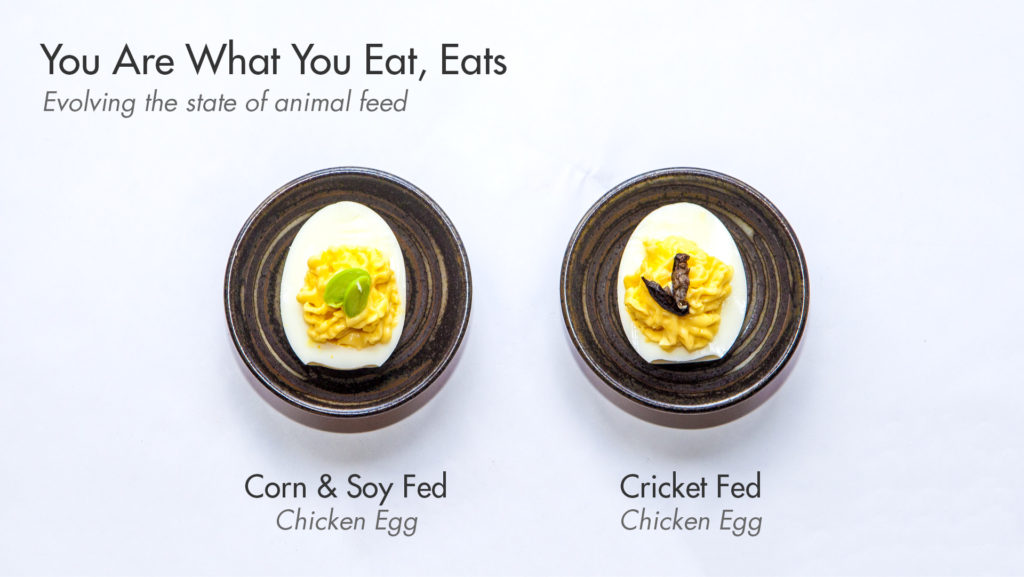
“You Are What You Eat, Eats”
Evolving the state of animal feed
- Dish: Two Deviled Eggs, cricket-fed chicken egg vs. conventional chicken egg
- Featured Conversation: Sean McDonald, CEO of Bitwater Farms
Bitwater Farms works with poultry farmers to install modular cricket farms onsite, which are harvested as feed for poultry. Crickets eat a vegetable based diet and are fed to chickens. Extra crickets are bought back and sold into the growing edible insect supply chain.
During our interview with Sean McDonald of Bitwater Farms, dinner guests received a side-by-side comparison of two deviled eggs. One from a Bitwater Farms chicken farm, fed by crickets, and topped with crickets. And the other egg comes from a conventional farm without Bitwater Farms – topped with roasted ground soybeans to represent standard chicken feed.
Course 5: Insects Are the New Normal – The Year 2040
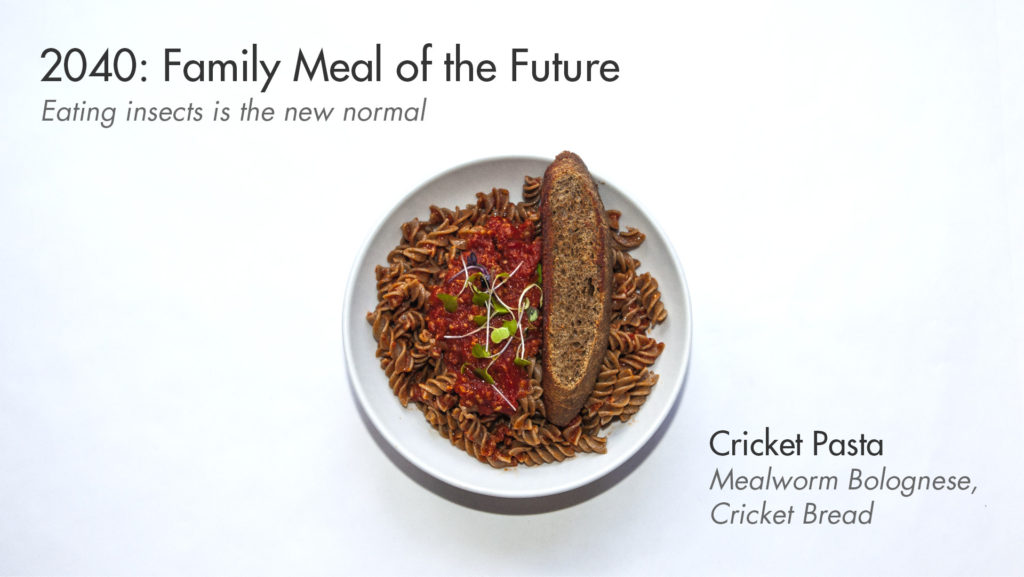
“Family Meal of the Future”
Eating insects is the new normal
- Dish: Cricket Rotini, Mealworm Bolognese, Insect Rolls, Jackfruit Sausage
- Cocktail: Oaxacan Spaghetti Western; Mezcal Negroni feat. Mezcal Buenbicho
- Featured Conversation: Lee Cadesky, Co-Founder, One Hop Kitchen
The vast majority of humanity eats insects regularly. And it turns out that insects are not only protein-rich, their cultivation also requires dramatically less energy and resource and produces far less pollution than the farming of livestock.
Lee Cadesky, Co-Founder of One Hop Kitchen, “the world’s first, best, and only insect bolognese sauce,” spoke to the audience about how his cricket & mealworm based sauces can save approximately 1,900 liters of water per jar compared to beef based sauces, and supply the same amount of protein with much less saturated fat and cholesterol.
Despite these benefits, some cultures in the world still hang on to a certain level of stigma when it comes to eating insects. For this reason, we created a dish rooted in comfort and familiarity: rotini with bolognese sauce, meatballs, and bread.
The twist: the rotini is made from cricket flour (by Bugsolutely), the bolognese is made with mealworms (by One Hop Kitchen), the meatballs made from jackfruit and shiitake mushrooms, and the bread was made from mealworm flour (by Entomo Farms & Exo). By the year 2040 or earlier, we envision a world where eating insects is comfortably mainstream.
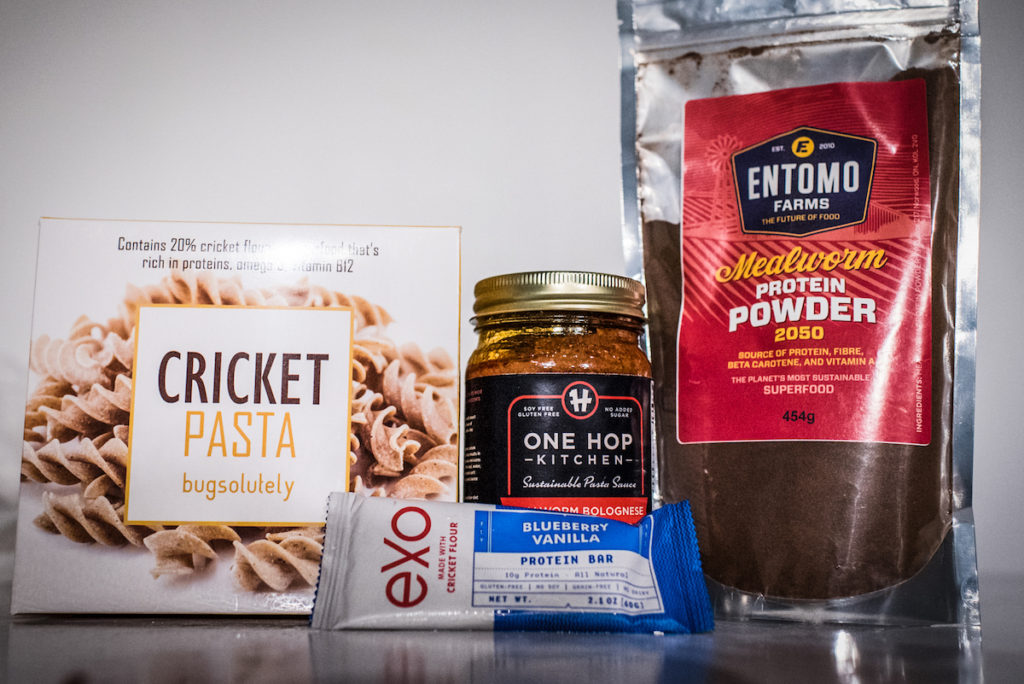
The future of protein includes insects, brought to you by Bugsolutely, Exo, One Hop Kitchen, and Entomo Farms.
Interstitial Discussion
Cellular Agriculture: Culturing Proteins
- Featured Conversation: Kevin Yuen, Modern Meadow
As we travel further into the future, we focus on the emerging innovation of cellular agriculture, the production of agricultural products from cell cultures. Modern Meadow, one such company at the forefront of the cellular agricultural movement, produces cultured meat and leather in Brooklyn, NY. Kevin Yuen from Modern Meadow was on hand to share a vision of what cultured protein could bring us in the future: a world where protein is more sustainably produced, animal welfare issues are reduced, food safety improves, and even protein nutrition can be tightly controlled.
Course 6: Protein for 9 Billion – The Year 2065
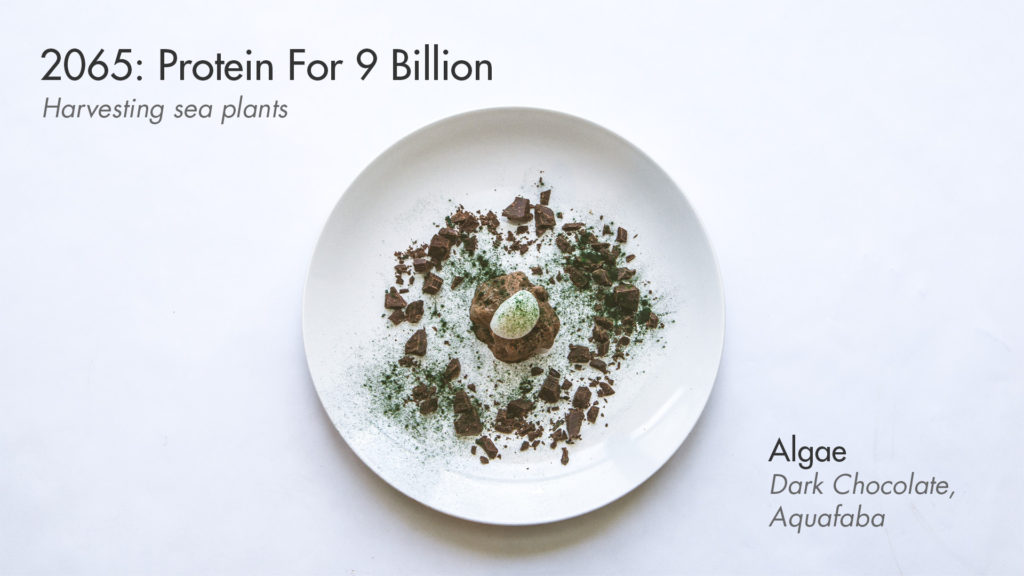
“Aquatic Protein”
The protein power of sea plants
- Dish: Spirulina-Chocolate Ice Cream with Aquafaba feat. Algae Factory
- Beverage: Lighter Than Air, Gin Sour feat. NY Distilling Company’s Dorothy Parker
Our dessert showcased the magic of spirulina, one of the most protein dense foods available, with 57g protein per 100g (Beef is approximately 26g protein per 100g. We turned the already delicious chocolate algae bars from the Algae Factory into ice cream, topped with aquafaba (whipped chickpea water).
Join the Future Market mailing list or follow on Facebook, Twitter, or Instagram to stay in the loop for announcements about future dinner events and workshops.
Visit the Future Market for a full photo gallery.
Thank You to the Future Market team & collaborators: Ben Walmer, Neil Redding, Riccardo Accolla, Alrik Suvari, Chris “CJ” Jordan, Leonardo Urbina, Danielle Gould, Nina Meijers, Soomin Baik, Aeh Jay Hollenbeck, Jeffrey dePicciotto, Danny Zlobnsky, Julia Greene, Peter Droste, Nate Debos, Rudy Gould, Jason DeMera, Emily Law, Maaz Shahid, Carson Peterson, Romain Lacombe, Emily Dodd, Emily Dellas.
